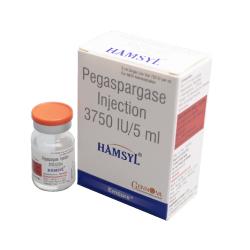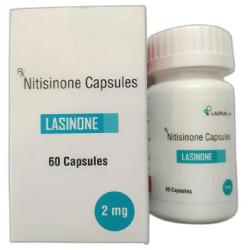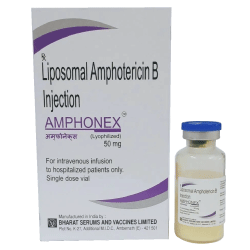Description
Pegaspargase 3750 IU Injection is recommended for the treatment of:
- Acute Lymphoblastic Leukemia: Prednisone, anthracycline, and vincristine together are prescribed as a first-line therapy for individuals with this disease.
- Individuals suffering from both acute lymphoblastic leukemia (ALL) and hypersensitivity to natural forms of L-asparaginase.
Dosage and Side Effects
- 2,500 International Units/m2 intramuscularly or intravenously not more frequently than every 14 days.
- For intramuscular administration,one should limit the volume at a single injection site to 2 mL; if greater than 2 mL, use multiple injection sites.
- One should not administer Pegaspargase injection if the drug has been frozen, stored at room temperature for more than 48 hours, or shaken or vigorously agitated.
The most frequent side effects are allergic responses, cerebral blood clots, issues with blood clotting, and elevated blood sugar. Pegaspargase can also cause coagulopathy, glucose intolerance, and severe thrombosis, among other serious adverse effects.
FAQ's
What is Pegaspargase used for?
It’s used for treating acute lymphoblastic leukemia in pediatric and adult patients, either as first-line treatment or for those with hypersensitivity to asparaginase.
How is Pegaspargase given?
Administered every 14 days either intramuscularly or intravenously, with doses based on age.
What should be watched for when using Pegaspargase?
Look out for serious reactions after administration and avoid it in specific medical conditions like prior serious hypersensitivity, thrombosis, pancreatitis, hemorrhagic events, or severe liver impairment.
What are the main warnings with Pegaspargse?
Keep an eye out for allergic reactions, thrombosis, pancreatitis, glucose issues, bleeding, and liver problems.
What are the common side effects of Pegaspargse?
Common adverse effects include issues like hypoalbuminemia, elevated transaminases, febrile neutropenia, hypertriglyceridemia, hyperglycemia, pancreatitis, clotting problems, embolic or thrombotic events, and hypersensitivity reactions.






